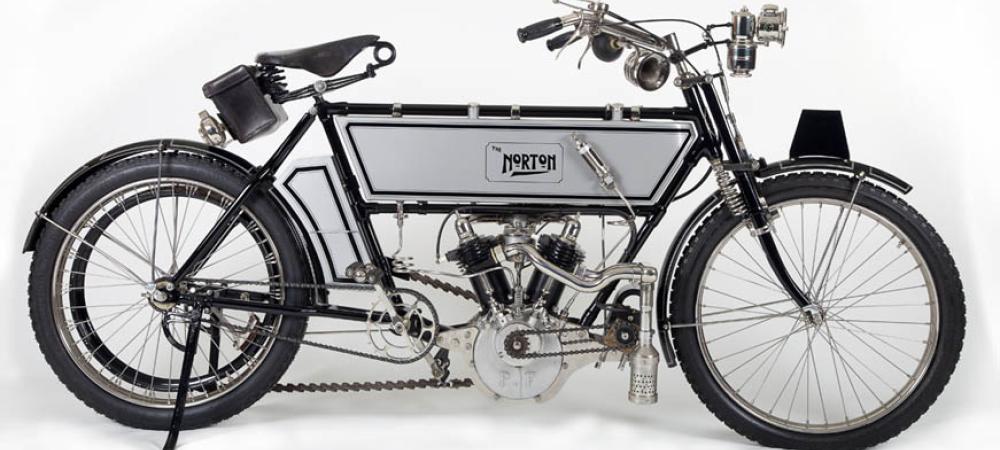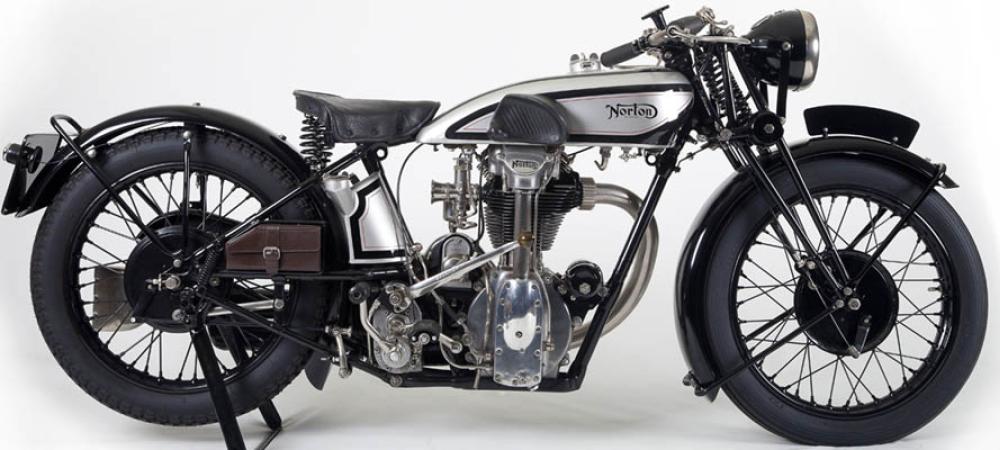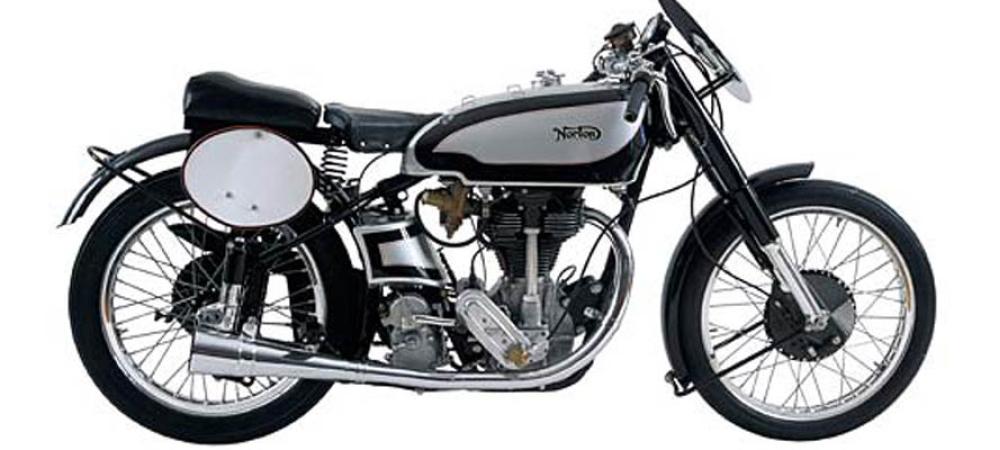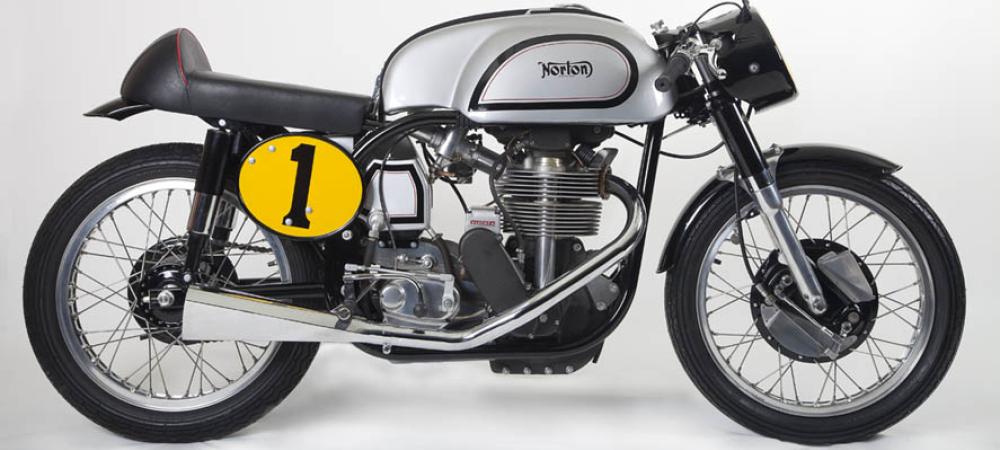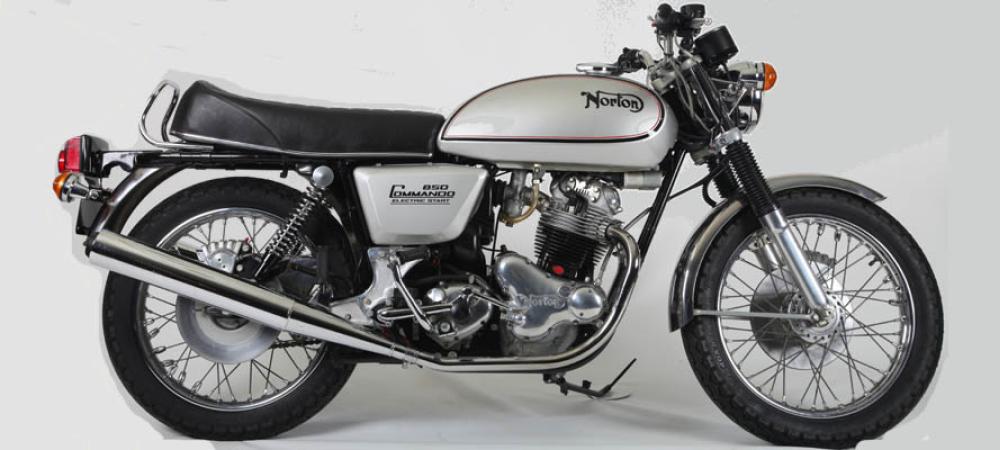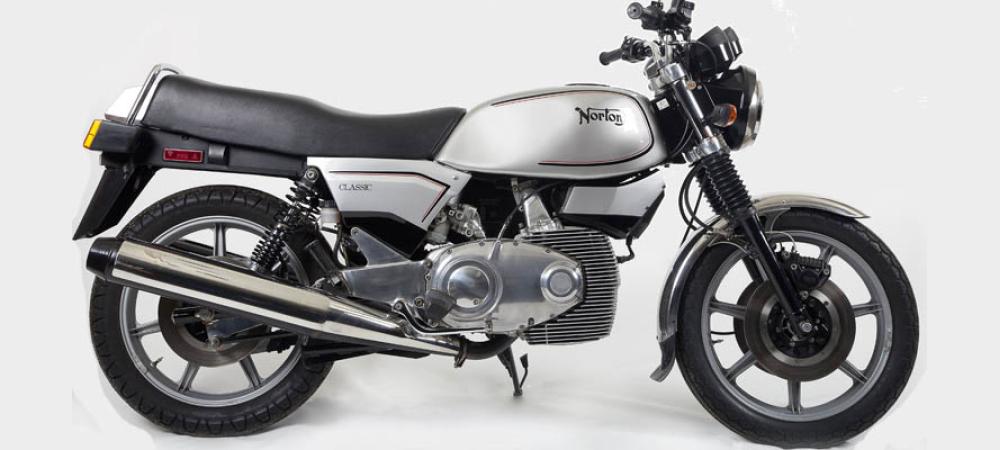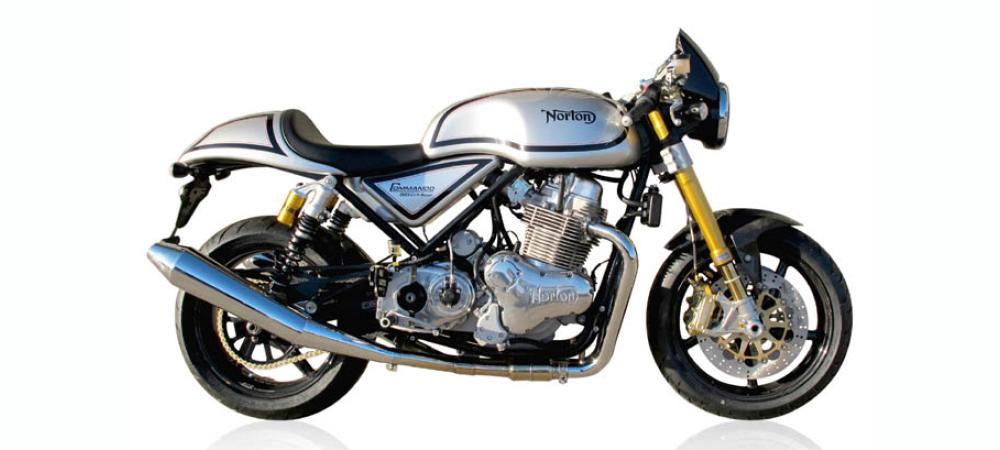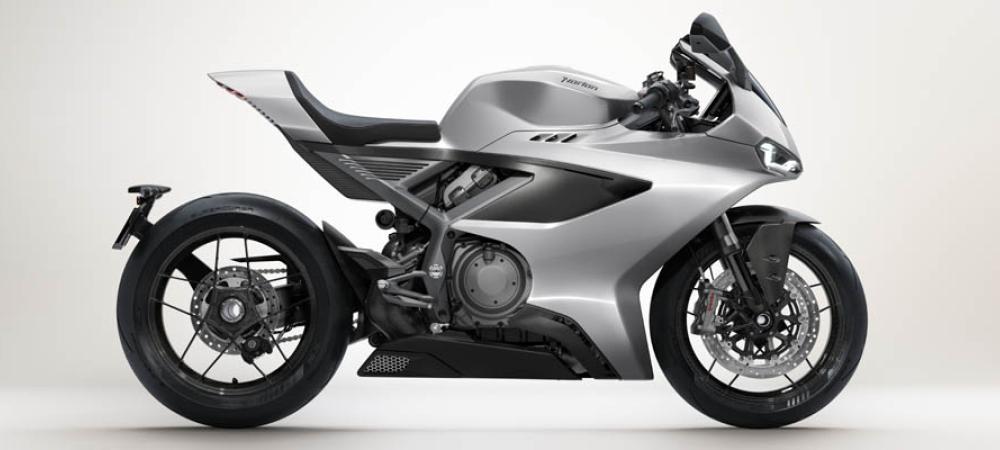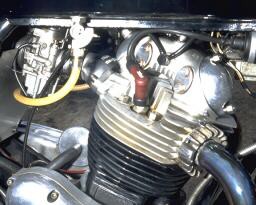A review of correspondence from NOC-L
A review of correspondence comparing alternative Commando carburettors; including Amal Mk.l½s, Amal Mk.2s, SUs and lastly, more controversially, it seems, Mikunis.
| Mikuni | SU | Amal |
Mikuni twin carb conversion - back to Amals
Any of you familiar with Brit-Iron can probably remember my frequent rants about carburettor substitutions on Nortons. I have a lot of experience trying to run a dual Mikuni setup and would strongly recommend against it; (dual that is). The jet combinations are staggering, and you can't seem to get the bike to 'settle down' to figure your way out of anything. I made the change years ago because I thought I might get better performance with a more modern carburettor setup. Nothing could be further from the truth. Resleeve your Amals. There may be some design flaws in the Norton that could benefit from some 'modern engineering', but from my experience, not carburation.
Jeff Bean (bucbean@pipeline.com) on NOC-L 5th. Mar 1997
Settings for single carburettors
These are personal observations on single carburettors for a fairly low compression 850 with unbalanced pipes, peashooter silencers and K&N type air filter.
| SU HIF6 |
MIKUNI VM34 |
AMAL Mk.l 932 |
AMAL Mk.2 2934 |
|
| NEEDLE | BFD | 6DH3 | ||
| SLIDE | 2.5 | 3 | 3½ | |
| MAIN JET | 230 | 280 | 280 | |
| PILOT JET | 35 | 25 | ||
| AIR JET | 2.0 | |||
| NEEDLE JET | P-0 | 106 | 106 | |
| SPRING | RED | |||
| JET | 0.10 | |||
| PROS | Tractable Economical Durable |
Durable | Cheap Easy to tune Easy to start |
Still working on this So far, the best |
| CONS | Tight fit Dashpot filling difficult Tuning - many needles Can be hard to start |
Tuning difficult Can be hard to start |
Primitive Fragile Can run out of fuel when flat out |
AndyDunn (andy.dunn@gecm.com) on NOC-L 5th. Mar 1997
Mikuni single carb - good, but the tuning is difficult
About the Mikuni single carburettor - it works great, especially at this high elevation here in Flagstaff. My bike is geared so that at 60 m.p.h. it is reving at 3500 r.p.m. The biggest problem I have had with it is getting it tuned, as its range of adjustments are so great. But once that was done, I think it can not be beat. The dual carburettors are great for racing at the high end, but they suck at street legal speeds. The single lacks power at the high end, but it makes up for it between 3000 and 5000 r.p.m., where most of us are when we are riding.
Have not tried the Amal Mk.2 single carburettor setup, but after tuning my Mikuni for 7000', (with enough richness to spare should I go to a lower elevation, I am quite happy with the way it performs. It was a real pain getting it tuned in though.
There are effectively four overlapping ranges one has to deal with. The lower is controlled by the idle jet and slide, then just above that, but overlapping is the needle jet, then the needle, then lastly the main. Changing the main has little effect unless I approach the (dreaded) red line. I suspect that the reason most disparage the Mikuni is because it is difficult, and downright frustrating to deal with the four metering ranges. Invariably, once you think you get it, you find a 'dead spot'. But once you find the right combination for your motor, it runs so nice, smooth as glass, and all the power you need at lower r.p.m., never to hit the dreaded red line.
Steven R. Schoner (dm550@cleveland.freenet.edu) on NOC-L 15th. Jul 1997
Steven R. Schoner (dm550@cleveland.freenet.edu) on NOC-L 8th. Jun 1998
Mikuni single carb - better m.p.g. but slightly reduced top-end performance
One advantage the Mikuni carburettor will give you is that its easier to keep adjusted ... no synch. to worry about. Also, if you're not used to the Amal tickler, the Mikuni's choke may be desirable. However, I run two Amal 932s on my Mk.lll, the idle is superb, and the whole affair is not fussy at all. One reason I think the Mikuni conversion has such a good name is that people compare its carburation to a pair of clapped out, out-of-tune Amals which is not a valid comparison. The single Mikuni may be a good bet around town, and it will certainly give you good fuel mileage, but more and more people I know have switched back to the twin 932s because of performance at higher revs. As for what size to use, I'd stick to a 36mm Mikuni if you were to go that way. The 34mms are far more common, so that's why you see them offered more often.
Greg Kricorissian (grkricor@ccs.carleton.ca) on NOC-L 21st. Oct. 1997
Mikuni single carb - Amal spring added to increase throttle tension
I recently put a 34mm Mikuni on my 1974 Commando. I like it. Stan Smith at Rocky Point (my source) was very helpful and provided advice by phone and e-mail along the way. The bike runs great although I am a little irritated by the intake noise. The original pancake type air filter that came with the Mikuni kit might be better replaced by a better filter, with the corresponding modification of the rear air filter plate. The bike is a 1st. kick starter, with no tickling and good running for my rather conservative driving, throughout the range.
I also purchased the choke conversion kit so that I could keep the handlebar mounted choke, but have not got around to installing it yet. Make sure you get some type of fitting (45 degree elbow) to make a nice interface between the cable end and the carb top. Also, I added an Amal spring to the Mikuni to increase throttle tension or feel (it was way too light with the Mikuni spring only).
Wayne Guntzel (wguntz@sanasys.com) on NOC-L 21st. Oct. 1997
Mikuni carbs difficult to jet properly - SU recommended
If Mikunis work, it is because someone else made them work. Most of the tuning instructions for Mikunis which do work, come from third party vendors -- Sudco, mainly -- who have had to invest a lot of time and money in R&D to make them perform properly. As jetted at the factory most conversions don't suit the purpose they were intended for and have to be reworked.
There are Brit. options that are good ones: The new Amals are said to be made of a much tougher material than the originals and are a known quantity. That is one option. If you are serious about a single carb conversion, I am still a big fan of the SU. They are simple, they bolt right on, they work and you can tune them yourself. They also give better gas mileage than the single Mikuni and better mid-range torque. Furthermore, there is a huge body of tuning information out there in the market that is well researched, some of the best coming from the factory.
Charles Lipton (crlipton@iac.co.jp) on NOC-L 21st. Oct. 1997
Mikuni single carb - Amals preferred
As former owner of a Mk.lll equipped with single 36mm Mikuni, I can tell you I was 'underwhelmed' by it. These bikes are ho hum enough performers to begin with, compared to a Combat or early 'S' model, for instance, and this conversion makes it 'more of the same'; which means smooth, but (to my taste) boring. That bike (which went to New Zealand with the new owner) had stock Amal concentric 30mm carbs, or a single big Mikuni or a pair of 34mm Mikuni (worst on mileage, tricky starting). I liked it best with the Amals. Although I personally have no experience with sleeving, I would expect to get more than a few thousand miles out of this procedure if it is as worthwhile as many claim.
Tom Davenport (tom@thekinetics.com) on NOC-L 21st. Oct. 1997
Mikuni carbs - no better than a good set of Amals
In my experience, Mikuni carbs can be troublesome if not jetted properly and there are a bewildering number of choices here. I have ground the cutaway on several that came into the shop running too rich; I have no idea who supplied them. Another problem is that the throttle cable is fouled by the frame backbone necessitating mounting the carb at an angle which causes the float level to be incorrect. How much is anybody's guess. The closer to vertical it is mounted, the more the cable binds. Twin Amals in good condition can be made to run very well and return 55 mpg (US) with new needle jets and jet needles, if you run at 60-65 m.p.h. Jetting information is widely available for every conceivable combination of cams, exhausts and what-have-you. Although, resleeved carbs can run too rich off-idle, this can be corrected by using a #25 pilot jet in the previously vacant threaded hole.
Thomas Allen (thomasa@halcyon.com) on NOC-L 21st. Oct. 1997
Mikuni single carb - better low range performance than Amals
Get rid of the Amals, and go with a single Mikuni. That is what I have on my 1971 Roadster and for the money it will be quite worth it. Overall performance is much better in the lower (2000 to 3500) r.p.m. range than with the double Amals. And, unless you like to go to 5000 r.p.m. or higher you will find that it does much better for normal touring. I really like my single Mikuni setup, and would not ever want to change back to the original configuration. Jetting it can be a pain though. There are so many jet and needle sizes available, but if you follow the Norton Tech Guide #2 for the jetting, starting at sea level, you will be able to zero it in fairly quickly.
Steven Schoner (dm550@cleveland.freenet.edu) on NOC-L 21st. Oct. 1997
Mikuni single carb - better low range performance up to 4500 r.p.m. confirmed
I converted my Mk.ll 850cc Commando to a single Mikuni 10 years ago. A 34mm worked fine for me with a 260 main jet, and a 'camenbert' shaped K&N air filter provided the best results. Power loss is minimal up to 4500 r.p.m., but breaking the ton will be harder for you.
Klaus Kaak (kaak@inforamp.net) on NOC-L 21st. Oct. 1997
Mikuni twin carbs - better than the single carb conversion, but still not convinced
I installed dual 34mm Mikunis on my 1974 850cc Roadster several years ago. They have been very dependable and breath very well at the higher revs, with the expected slight loss in low end tractability. However, if I had to do it again, I think I would go with the resleeved Amal Mk.ls. You retain the stock look of the original carbs and air filter box, and the Amals performed very well before the slides wore out. Also, if I went with Mikunis again, I think I would go with the dual 32mms. The single carb is easy to tune but I couldn't put up with a loss in top end performance.
Bill Larson (william_larson@aar.com) on NOC-L 21st. Oct. 1997
Mikuni carb manual produced by Sudco
|
"If Mikunis work, it is because someone else made them work. Most of the tuning instructions for Mikunis which do work, come from third party vendors -- Sudco, mainly --" (Charles Lipton) |
Yes and they published a very thorough book of about 40 pages length in the '70s which was a godsend for those wanting to use the Mikunis.
Discussed this with Ray McDonnell, and his comments were that, for all the incredible variety of needles and needle jets available, none actually worked of the ones he'd tried; all had a flat spot at one end or the other of the needle jet running range.
Tom Davenport (tom@thekinetics.com) on NOC-L 22nd. Oct. 1997
Mikuni single carb - a return to Amals improved performance
My story on Mikunis is that my bike originally had a single Mikuni on it. It had no numbers which would allow me to order the proper parts and Sudco only wanted to sell me a new carb. I switched to new Amals (stock type and sizes) and have no regrets. The flat spot in the middle of the range is gone and high r.p.m.s are no longer limited by air/fuel delivery. I had my Mk.lll up well over the ton today and it wasn't showing any signs of running out of steam.
John S. Morris (jsm@mediaone.net) on NOC-L 24th. Oct 1997
Mikuni twin carb conversion - not advised
I have a 1970 Commando that I decided to jazz up/modernise/hot rod in the carburettor department about 15 years ago. I bought a twin 34mm Mikuni setup from somewhere and in 15 years of piddling around (sometimes in earnest), have not been able to get this setup in a satisfactory state of tune. Additionally, you won't be able to fit air filters with the twin setup. The fuel line plumbing is a nightmare In fact I can't think of one thing I like about them.
Jeff Bean (bucbean@pop.pipeline.com) on NOC-L 28th. Oct 1997
Mikuni twin carb conversion - not advised
A single Amal Mk.2 was designed for the needs of the Norton engine and is a better-manufactured product than the Mk.l product made under vastly different financial circumstances and to which he compares his Mikuni setup. It worked so well that Mikuni 'invented' their own carb using the Mk.2 blueprints.
My personal favorite is still the SU constant velocity carb. I ran a G15CS for a couple of years using a hogged out Mercury intake manifold and a single 1 1/4" (or was it a 1 3/16"?) SU carburettor from my friend's standard 1300 Mini after it got DCOEs and a hot cam. It was the smoothest, best behaved Norton 750 twin I ever rode (and miss).
SU carbs are probably the best documented in the world with tuning manuals being available at nearly any automotive bookseller. There is one moving part and one jet. It is the only carburettor I have ever sworn by and not at. You can buy all the parts you need at autojumbles and assemble the entire thing for less than US$50 even today. Not only that, once set up an SU carb runs well at all altitudes and is self adjusting (my caveat being that I have never installed and initially set up any system at anything higher than 1000 meters above sea level but have conducted instrument tests of several motorcycle and automotive systems at high altitudes as well as altitude and temperature tests under closed laboratory conditions in Denver.
I have always wanted to try to install a Bosch engine management system from an early BMW K100, a modified K- or L-Jetronic system from an early 924 Porsche, or to see if a Weber-Marelli injection system from a Guzzi or Ducati could be adapted to a Commando. The latter's engine condition sensing systems are already designed to be simple enough to work on a layout as antiquated as a Commando engine while being sophisticated enough to accurately meter fuel under all of the engine-room conditions a Norton would offer.
Charles Lipton (crlipton@iac.co.jp) on NOC-L 7th. Jun 1998
[There are some details about Mikuni jetting on the Ontario Norton Owners web site - Editor]
Installation problems with the SU conversion

"I purchased a Phoenix SU HIF6 carburettor conversion kit for my '72 Commando. I trial fitted the carburettor/manifold combination and bumped into a couple of problems:-
(1) The throttle cable attachment was severely mis-aimed, promising a poor action & short life. Some sort of bracket will almost certainly have to be cobbled up.
(2) There is virtually NO clearance between the carburettor dome and the frame web between the two down tubes just under the rear of the fuel tank.
I can only guess that the maybe quarter inch clearance will disappear with the first attempt to start the engine! This is surely unsatisfactory. I see only two solutions, neither of which seem to be very attractive.
(i) Cut the frame, and suffer unknown problems from weakening that important unit.
(ii) Remove material from the cast aluminum manifold in an attempt to shorten it up and re-angle the carb down & away from the frame web. The manifold is already very short, with rather short, sharp bends for the intake tract. Removing more material will only worsen this, and have unknown effects on the strength of the assembly.
Has anybody solved these problems? Is another more suitable manifold available?"
SU single carb - difficult to install, but good performance
I understand that SOME of these conversions have a 'strap iron' throttle cable bracket. Mine (purchased 1992) is an ear cast into the inlet manifold. It is aimed straight back, when it needs to be angled 45 degrees down. The SU dome has very little clearance with the frame web, I mean so little clearance that the rubber grommet will not snug down in its hole on the frame web, due to interference with that dome!
Although there is very little clearance from the dome to the frame, this is however, no problem as the dome will not bump up in the frame even during vigorous kicking and swearing. In my opinion, the SU conversion keeps its promises, even that about attractiveness as it usually starts first kick. The petrol consumption is also way down compared to twin Amals (60-65 m.p.g.)
Paul O'Neil (hudson29@aol.com)on NOC-L 5th. May 1997
SU single carb - installation problems can be due to incorrectly repaired frames
I suspect I know why the SU hits the frame. I straighten frames to support my airplane habit and have done many Commandos. The main top tube (the one that fouls with the SU) should have a bend in it when viewed from the side. This is caused by the metal shrinking when the neck support bar was welded in at the factory. If a bent Commando frame is repaired by someone who doesn't know any better they push the top tube straight. This gives the bike a bit more head angle and lowers the top tube just enough to foul an SU. Often it also puts a slight ripple in the top of the tube.
You can easily check the top bar to see if the correct amount of bend is present. Lay a straightedge on the backbone of the frame. With the straight edge tight to the forward part of the tube, it should just touch the sheet that goes crosswise at the seat rails. This test is good for all Commandos except the early 1968s and most of them are broken by now.
Vernon Fueston (fueston@snowcrest.net) on NOC-L 14th. Sep 1997
SU single carb conversion - recommended
I have a single SU HIF6 on my 1972 Combat. I'm very satisfied with it and the gas mileage is very good (25 km/l, 65 m.p.g. for the metrically challenged) compared to stock Amals or a Mikuni. The midrange is very good, the high end a tiny bit weaker (or so they say). Other people (inc. Paul O'Neil) have reported trouble fitting the SU to the engine due to the carb dome hitting the upper frame tube. I guess this has to do with high tolerances in the frame department at Norton as there is room enough on my bike. I can only recommend the SU conversion.
Espen Olsen (espen.olsen@matek.sintef.no) on NOC-L 22nd. Oct. 1997
SU single carb - tuning
I used to do these things all the time on Volvos, MGs and Rovers etc. It was much easier than Amals as there is no pilot circuit. After you get them synced with a Unisyn™ or similar device, such as a small hose in your ear, you use the slide lifter protruding from the bottom of the vacuum chamber to lift the slide, about 1/16th".
When the mixture is correct the idle speed should momentarily rise about 50 r.p.m., then fall to about 50 r.p.m. below where it was before you lifted the slide. By the way, you change the mixture by turning the large nut just above the enrichening lever thereby raising (weakening) or lowering (enriching) the needle jet.
Tom Allen (thomasa@halcyon.com)on NOC-L 8th. Jun 1998
Amal Concentric Mk.2
|
"Does the Mk.2 Amal Concentric offer any advantages over the Mk.l? Do these carbs have to be rubber mounted like on the later Bonnies, or can they fit the same fixed alloy manifold and flange mountings of the earlier Commando?" |
The Mk.2 is a piece of engineering that is right up to scratch. Cold start jets mean no tickling or choking, but better starting. The slide and body are made of materials designed to work with each other, rather than against each other. Mk.ls wear out the slides in 10,000 miles, and the body shortly thereafter. Mk.2s will merely work correctly forever.
Ben English (ben.english@dmvms.mailnet.state.ny.us) on NOC-L 16th. Jun 1997
Amal Concentric Mk.l½
I believe that there is a MK 1½ model which has the Mk.2 internals, but which mounts directly to the Commando manifold. Walridges in Canada is one source, as I remember.
John Pinkham (jpinkham@efn.org) on NOC-L 19th. Jun 1997
Amal Concentric Mk.l½ - an explanation
I've only seen photos of them, but the MK1½ Concentric looks like a regular Concentric, with the addition of the later starting circuit, as found in the Mk.2, or the Mikuni carburettor.
GregKricorissian (grkricor@ccs.carleton.ca) on NOC-L 22nd. Jun 1997
Amal Concentrics - a comparison of the Mk.l and the Mk.2
As far as I recall, the differences between the Amal Mk.2 and Mk.l Concentrics are as follows:-
- Mk.2 is made of aluminum, rather than pot metal
- Mk.2 has a proper brass slide, rather than pot metal
- Mk.2 has a proper pilot jet, set into the fuel bowl
- Mk2, has a round mounting flange, intended to mount into a rubber hose, providing immunity from vibration and heat
I have found descriptions of a Mk.l½ Concentric, which is essentially a Mk.2 with a Mk.l mounting flange.
Peter Aslan (paslan@uk.mdis.com) on NOC-L 23rd. Jun 1997
Amal Concentric Mk.l½ - further details
As one of the few who have actually seen an Amal Mk.l½, I can say that your are correct! The Mk.l½ was a zinc die casting just like the Concentric, but it had the more advanced Mikuni starting circuit. Your Norton will start without playing stink finger with the tickler, but it wouldn't last any longer than a Concentric. I've only seen one pair.
Dave Hatch (aef@icx.com) on NOC-L 23rd. Jun 1997
Amal Concentric Mk.2 - setting up
You can use the recommended Mk.l jetting as a starting point for setting up the Amal Mk.2s.
The main and needle jets are interchangable; cam and exhaust selection will determine the final settings. I find as you increase valve overlap the low end has to be leaned a bit. Open up the exhaust and you have to richen the mid and upper end. Run Mk.2 velocity stacks with or without filters and you will have to up the mains about 3 sizes, but reduce the needle jet one size as air for the atomizer will be out of the airstream. Also, variability in gasoline mix can make a one or two jet size difference, mainly on the low end.
Pete Serrino (serrinop@ehsct7.envmed.rochester.edu) on NOC-L 30th. Oct 1997
Another Amal Concentric recommendation
I've been running my Mk.lll Roadster for about 5000 miles on a single Mk,1 Concentric. It's fine, starts easily, ticks over well enough and returns around 45 m.p.g. (UK gallons).
Frank Westworth (classbikes@aol.com) on NOC-L 7th. Jan 1998
Amals - slide repairs
To the best of my knowledge, the Amal's bodies and slides are made of zinc aluminium . The only way I have found to extent the life of your Amal slides is to get your carburettor and slide resleeved. This is done by increasing the i.d. of the carburettor body and machining a steel sleeve up to go over your slide. I am still using the same slide after 6 years on my Combat and it still is going strong.
Pete (ipdream@netrade.com.au) on NOC-L 7th. Jun 1998
Carburettor manifolds and tuning
Firstly, the only two into one manifolds I've come across are all 32mm ports. The only one-piece manifold to head gaskets that I've found are virtually paper thin and knowing that they would in no way reduce any heat transfer to the carburettor, I decided and am happy with using Loctite 510 that works as a gasket replacement and stands temperatures up to 400oF.
If you want it to look original, you can buy a single carburettor front air filter plate. What you will find is that they are all longer and the air filter will be difficult to get on so you will need to make up a filter to fit and hug the air filter cage. The cage will need to be taken down in width by 40 to 160 thou., depending on how it sits. The other option is to run a velocity stack.
Your decision could be made on the basis of whether or not the motor is starving for air. I started by refitting the carburettor and doubling the size of the jet. My combat with 32mm ports started with a 440 main jet and the verdict was that it ran too lean. I changed the needle jet to 107 and the verdict was, too rich. A 400 jet ran OK but still just rich; a 360 jet was too rich at cruise (3000 - 4500 r.p.m.) and a bit sluggish.
I changed the slide from a 3 to a 3½ but it was still too rich by the time I hit 5000 r.p.m., and the bike would die until I backed off. I took the air filter off, put on an RGM polished velocity stack with the 3½ slide and 400 main jet, 40 thou. pistons and a 2S cam. The thing flew yet still idled at 600 r.p.m. at every traffic light although everyone I spoke to told me that Combat motors can't idle.
My next 750 was standard cam and bore with 28mm ports and a 30 mm carburettor, although as I said before, the manifold had a 32 mm port. Here I took the mouth out of the port on the head to be able to allow the mixture to flow without a step in front of it. The 30mm carburettor into the 32mm manifold is OK.
I found that it ran fairly standard with a No.3 slide cutaway, 106 needle jet and increased main jet from 220-320-350. I can't exactly remember if I changed the needle because the 107 needle jet was too rich and the 106 was too lean; I think I got a shorter needle to compensate for this.
The RGM version of the manifold takes only 2 bolts to lock it up, therefore you need to pay attention in making sure the faces meet well and stay met at the manifold and head. The Fair Spares manifold has 4 bolts locking it up which is good but when taking out and putting in the centre two bolts on the end of an Allen key, you need to be well balanced and careful not to drop the bolt down the port and into the valve. In my opinion, the Fair Spares manifold looks ugly, but the advantage is that they have 2 types. On both you can run a rubber adapter which separates the the manifold and the carburettor, reducing heat transfer. I didn't find a heat problem with either; I ran as normal with the carburettor O-ring and also the 32mm insulating thick gasket.
I would also recommend sleeving the slide as this reduces a lot of wear. I found that the carburettor body and slide got stiff a few times when settling in and I needed to take out the carb. a little more by hand to have the slide drop freely. It's done it twice, touching in only one or two places, but now the only time I need to maintain the carburettor is when I need to take the head off. It never goes out of sync., and having this much larger jet also allow any water in the fuel to be able to travel through and get burnt up in the chamber.
With the single carburettor being centrally mounted, the cable runs right under the the main tube under the frame and then takes what looks like a sharp turn to enter the top of the carburettor. I found that it looks worse than it is; the twist grip is soft and smooth and the response is superb.
Pete (ipdream@netrade.com.au) on NOC-L 9th. Jun 1998
Experience with Mk.l Amals
For a long while I had been enduring poor starting and erratic running caused by the original Amal Mk.l Concentrics which were long past their useful life (or so I thought). After some research which included reading all the information on the NOC web site, I took a supplier's advice and invested £110 + VAT in a pair of Mk.l Concentrics (260 main jets and uncut spray tubes).
The bike runs very well and ticks over at 600 ish rpm, however .... When fitted, the right hand carburettor would not flood; the tabs on the float which hold the float needle were bent. When the float chamber was empty, the float failed to lift the float needle so no petrol could enter the carb. Bending the tabs to the correct position fixed it.
Secondly the left hand cylinder misfired, and then cut out; the needle had become tangled in the spring. I assumed it hadn't been seated correctly, refitted it, started the bike and a few yards down the road it happened again; after replacing it again, it happened again. I replaced the clip and needle with items from my old carbs and the bike was fine. There was no obvious visual difference between the old and new components other than the old ones looked old and the new ones looked new.
A few weeks after that, the bike began to run on one and a half and it was evident that all was not well with the right hand carburettor; petrol was dribbling down the side of it. The float was full of petrol so it wasn't doing much floating and so I've replaced it with one out of my old carbs. At this rate they'll be back on the bike in their entirety in a few months.
It would be fair to say that I am not impressed with Amal Mk.l Concentric build quality or technology, and do not intend to use them again.
Adrian Draper (adriandraper@adelanta.co.uk) to Editor 16th. Sep 1998

